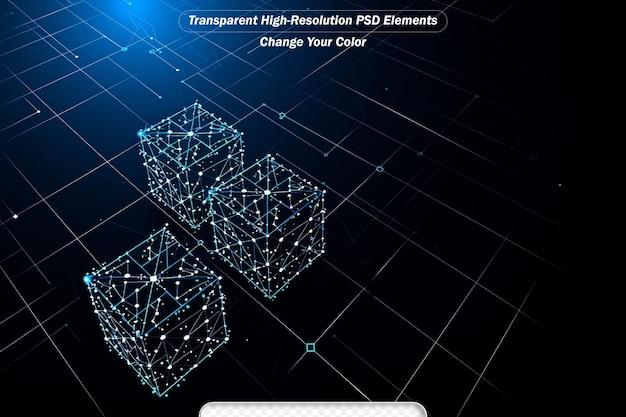Verifying Qualifications: How Blockchain Ensures Trust and Transparency
In a fast-evolving digital world, verifying professional and academic qualifications is critical for employers, educational institutions, and individuals alike. With credential fraud on the rise, customary verification methods are increasingly challenged. Blockchain technology is emerging as a game-changer, offering an immutable, clear, and secure solution for verifying qualifications.In this article, we’ll explore how blockchain ensures trust and transparency in credential verification, its key benefits, real-life case studies, and practical tips for effective implementation.
Understanding the Challenge: The Need for Reliable Qualification Verification
Qualification fraud is a global problem that affects hiring, university admissions, and professional licensing. Some of the common challenges in traditional verification methods include:
- Time-consuming, manual processes involving paperwork and phone calls
- Difficulty in authenticating foreign or older certificates
- Risks of forgery, alteration, and fake credentials
- Lack of a centralized and trustworthy database for verification
Blockchain offers a modern solution to these age-old problems by creating a tamper-proof, decentralized network for storing and sharing verified credentials.
What is Blockchain? (A Quick Refresher)
Blockchain is a distributed ledger technology that securely records and verifies transactions across a network of computers, making it nearly impossible to alter or fake records. Its core features — decentralization, transparency, and immutability — make it ideal for credential verification.
- Decentralization: No single authority controls the data, ensuring reduced risk of corruption or hacking.
- Transparency: Records are visible and verifiable by everyone with the necessary permissions.
- Immutability: Once data is logged on the blockchain,it cannot be changed or deleted.
How Blockchain Verifies Qualifications
Blockchain credentialing transforms the verification process from a manual, trust-based model to an automated, trustless one:
- Issuance: An educational institution or professional body issues a digital certificate and records its cryptographic hash on the blockchain.
- Ownership: The individual receives a digital credential, frequently enough in the form of a unique, non-fungible token (NFT) or verifiable credential.
- Verification: Third parties (like employers) can instantly verify the authenticity of the credential by checking the blockchain record, eliminating the need for intermediaries.
This blockchain-based process ensures that academic credentials, professional certificates, and work experience records are secure, tamper-proof, and easily transferable.
The Key Benefits of Blockchain-Based Qualification Verification
- Enhanced Trust: Immutable records mean no more forged diplomas or altered transcripts.
- instant Verification: Credentials can be checked in real-time, speeding up hiring and admissions processes.
- Global Accessibility: Verification is absolutely possible from anywhere in the world, regardless of the issuing country.
- Owner Control: Individuals have ownership over thier data, deciding who can access their credentials.
- Cost Savings: Reduces administrative overhead for institutions and employers.
Real-World Case Studies: Blockchain in Action
1. The MIT Digital Diploma Project
The Massachusetts Institute of Technology (MIT) allows graduates to receive digital diplomas on the blockchain. These diplomas can be instantly verified by employers worldwide, eliminating paperwork and the need for registrar intervention.
2. National Blockchain Initiatives
Countries like Malta, Singapore, and the Netherlands have launched national blockchain credentialing platforms. These systems provide secure, open standards for universities and employers to issue and verify degrees and certificates, combating qualification falsification at scale.
3. Learning Machine (now Hyland Credentials)
Hyland Credentials helped universities across the world adopt blockchain-based digital credentials, making student records instantly portable and verifiable.
First-Hand Experience: Testimonials from Blockchain Credential Holders
“After earning my MBA,I received a digital certificate on the blockchain. My prospective employer verified my qualifications with a single click. the transparency made the job request process quicker and more credible.”
— Sarah M.,Graduate,MIT Sloan School of Management
“As an HR manager,credential fraud was a growing concern. As adopting a blockchain-based verification service, our onboarding process is faster and we’re confident about the authenticity of new hires’ backgrounds.”
— Rajesh I., HR Professional, Tech Solutions Ltd.
Practical Tips for Institutions & Individuals Adopting Blockchain Credentialing
For Educational Institutions & Certification Bodies
- Partner with Reputable Blockchain Providers: Choose solutions compliant with global standards like W3C Verifiable Credentials.
- Educate Stakeholders: Train staff and students on the benefits and use of blockchain credentials.
- Set Clear Data Policies: Define permissions for accessing and sharing credentials to protect student privacy.
- Stay Updated: Monitor legal and regulatory developments in blockchain adoption.
For Students & Professionals
- Maintain Control of Your Credentials: Store your digital credentials securely in e-wallets or dedicated platforms.
- Leverage Verification Links: Share blockchain verification links with employers to showcase your trustworthy credentials.
- Ask Institutions about Digital Certification: If your university doesn’t offer blockchain credentials, encourage them to consider adopting the technology.
Future Trends: What’s Next for Blockchain in qualification Verification?
- Wider Adoption: Expect more universities, government agencies, and licensing boards to implement blockchain-enabled credentialing.
- Interoperable Standards: Growth of cross-border standards will make global verification seamless.
- Integration with Professional Networks: Credential wallets will integrate with LinkedIn, job boards, and HR platforms.
- Fraud-Proof Resumes: Smart resumes will automatically pull verified blockchain credentials, making CV fraud obsolete.
Conclusion: Building Trust & Transparency with Blockchain
Verifying qualifications is no longer just about trust—it’s about proof. blockchain technology delivers unrivaled trust and transparency, empowering employers, educational institutions, and individuals to move confidently in a digital-first world. Beyond preventing credential fraud,blockchain-based solutions simplify verification processes,reduce costs,and place individuals in control of their own achievements.
As more organizations embrace blockchain credentialing, the future looks bright for fraud-proof, easily accessible, and globally recognized qualifications. Weather you’re an employer seeking authentic candidates or a graduate eager to prove your expertise, blockchain is transforming the way we verify, trust, and share professional and academic achievements.

